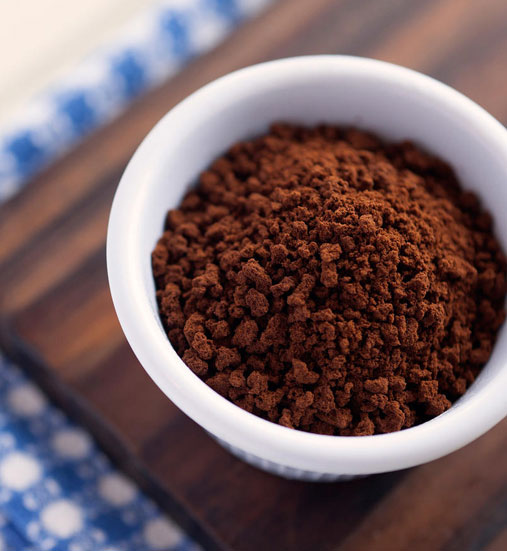A story of technology and ease: the evolution of instant coffee

Although for most coffee enthusiasts, instant coffee is no more than an emergency solution, there are few coffee lovers who occasionally prefer not only the convenience it offers but also its characteristic flavor.
The origins of instant coffee
Although it is more assosiated to the post-war years, instant coffee is a very old affair. Efforts to create instant coffee date back to the moment coffee began to conquer Europe in the mid-18th century in an effort to make coffee preparation easier. The first recorded effort to create instant coffee is in England in 1771, and the first such product in the US was created in 1853. Similar efforts are made by coffee professionals around the world, such as Japan and Latin America, but its inventor the first commercially successful instant coffee is considered the Englishman George Washington, while Nestle's related patents in 1938 will commercially take off instant coffee.
Both world wars have played a role in the development of instant coffee, which has made it imperative that both easy storage and easy preparation on a large scale, and overproduction of coffee from countries like Brazil, were searched angrily to maintain more efficiently the excess production of coffee beans they presented.
It is worth mentioning that the first instant coffees differed a lot from the form we know today. Most of the time, instant coffee was just a syrup of ready-made, concentrated coffee, which turned into brown by diluting it with hot water. Later, instant coffee took the form of a solid mass, the pieces of which could be dissolved in hot water, creating a drink. Even when instant coffee took the form we know a little bit today, the results were often disappointing: the coffee lagged considerably in flavor and aroma, and often disintegrated hard, leaving muddy remains in the cup.
 The rise and fall of instant coffee
The rise and fall of instant coffee
During the post-war years, instant coffee has spread widely, especially to the Americans. Experts in gastronomy have characterized the widespread spread of instant coffee as the "second wave" of coffee. In a sense, instant coffee made coffee easily accessible to everyone, minimizing the need for equipment purchases as well as specialized knowledge of coffee making.
By the time of its absolute peak, in the mid-1980s, the consumption of instant coffee is booming. Over one-third of coffee consumption in the USA was instant coffee, and the numbers on the rest of the planet are similar. Several countries, including Greece, have developed their coffee culture around instant coffee.
The beginning of the end of the popularity of instant coffee came from the espresso penetration of new markets such as the United States and other smaller countries such as Greece and the rise of the Third Wave of coffee, a particular weight in the quality of the coffee but also the full control of the extraction methods. Even in the days when instant coffee is clearly limited compared to the recent past, it is estimated that almost 40% of world coffee production is used to produce instant coffee.
How is instant coffee made?
Although it is difficult to imagine looking at the final product, the production of instant coffee is based on natural processes and not on the use of chemicals, at least as far as our time is concerned, since the first forms of instant coffee actually contained additional chemicals, something that is not the case today. The stages of instant coffee creation concern the roasting, extraction and finally drying, which can be done in a variety of ways.
Initially, the green coffee beans are roasted, as is the case with grains not intended for instant coffee, and then ground very fine. Thereafter, coffee is extracted under pressure and a relatively high temperature, and then the concentration of the resulting mixture is concentrated to the extent that it contains about 40% solids. Thereafter, the dehydration and dehydration of the mixture is followed, either at high or, more usually, at low temperatures, to produce instant coffee with the known crystalline texture.
It is noteworthy that robusta coffee is used for the production of instant coffee, not only because of its lower cost, but also because of the fact that its taste profile is best maintained through all of these processing steps compared to Arabica coffee. Still, Robusta grains tend to give thicker cream to the cup, which is usually desirable and desirable in instant coffee.
What's the future of instant coffee?
Today, the coffee market is dramatically different from previous decades. The audience is clearly more up to date, more demanding, and most coffee enthusiasts are constantly looking for new, quality flavors. At the same time, the fall in prices for home-made espresso machines has made them accessible to a wide range of consumers. In this context, instant coffee is difficult to become again as popular in the past.
On the other hand, there are clearly better quality instant coffee choices, with no added chemical and taste much better than they used to be. Instant coffee remains an alternative to occasions where a coffee machine can not be found, while the cold drinks it produces remain particularly delicious. Although it certainly is not the first choice, it is definitely within a frame, as an alternative - especially in Greece, as the Greek coffee culture was heavily associated with cafe frape!
Espresso, filter coffee or even instant coffee - what matters is to enjoy our cofffee!










